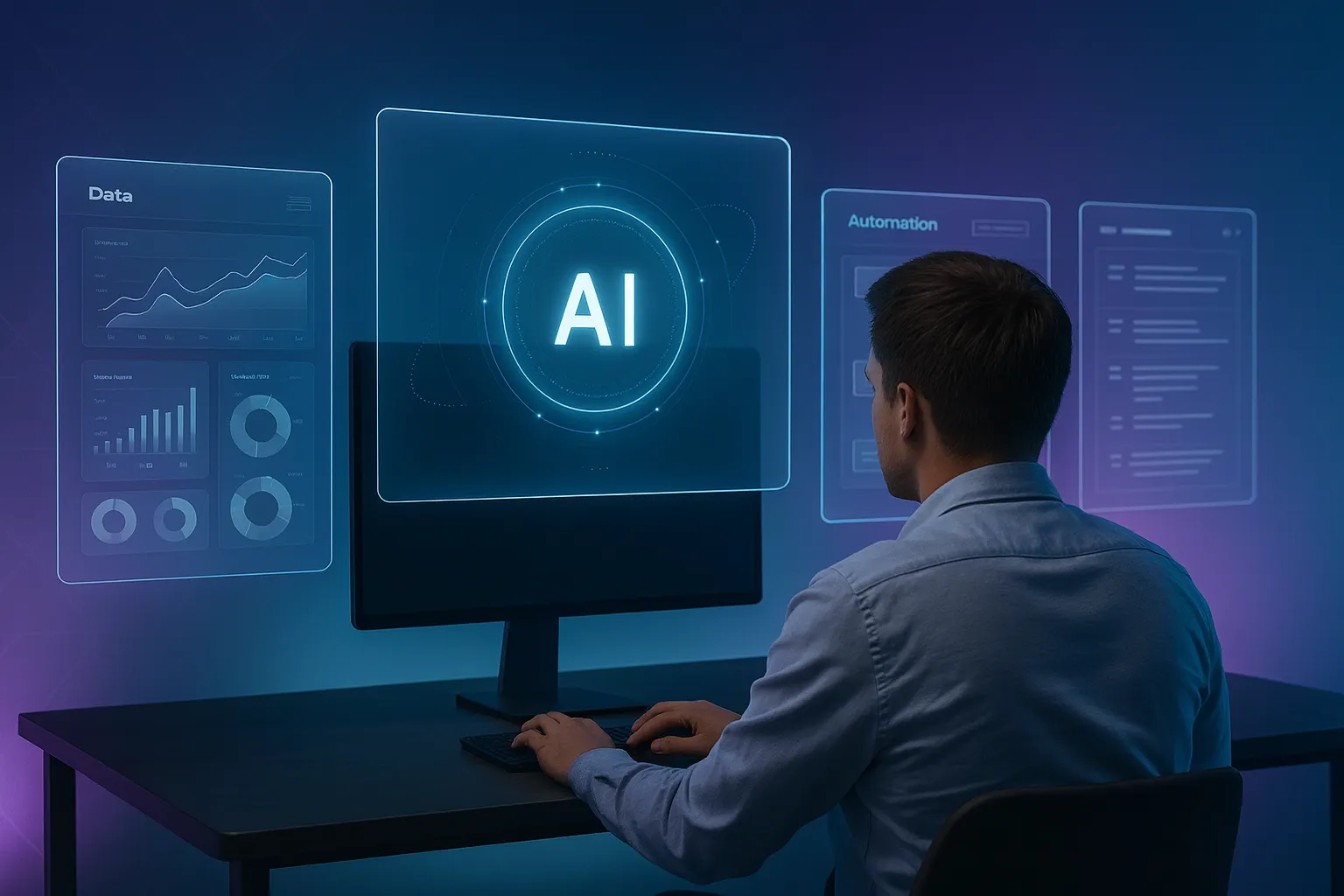What happens when the world’s most promising technology meets one of the world’s most capable engineering ecosystems, yet struggles to produce real outcomes? Though 86% of Indian enterprises have mapped a GenAI journey, only 66% have set their wheels in motion, charting a course that outpaces the global tide.
Welcome to the paradox facing India’s Global Capability Centers (GCCs) in the age of Generative AI.
GCCs have long evolved beyond transactional roles. Today, they’re expected to lead the charge on enterprise innovation, powering everything from predictive risk models to hyper-personalized customer experiences. GenAI, with its transformative promise, should be the GCC’s perfect storm of opportunity.
So why aren’t we seeing scaled success? Why do so many GenAI initiatives stall after a flashy proof-of-concept? And what invisible forces are holding back full-stack innovation from taking root inside India’s most advanced delivery hubs?
This article unpacks those very questions rooted in on-the-ground experience, field-tested playbooks, and real enterprise case studies. We’ll explore the structural, technical, and cultural obstacles preventing GenAI from thriving in the GCC model and why solving them isn’t optional, but existential.
The GCC GenAI Paradox: Opportunity Without Traction
India’s GCCs are ideally positioned for GenAI adoption:
- They offer deep integration with global IT systems and data
- They house scalable, agile engineering teams
- They support mission-critical business functions across domains like risk, compliance, customer service, and supply chain
Yet, success stories are rare. Most GenAI efforts remain in the sandbox stage, producing isolated proofs of concept that rarely transition into production. This paradoxical opportunity without execution demands deeper scrutiny.
1. Strategic Misalignment: Innovation in Isolation
Problem:
Many GenAI initiatives inside GCCs are disconnected from overarching enterprise imperatives. Teams often chase hype-based use cases (e.g., chatbots, summarizers) without clearly defined business outcomes or enterprise alignment.
Structural Causes:
- Innovation charters are not synchronized with enterprise digital roadmaps
- Lack of interlock between GCC GenAI teams and global line-of-business stakeholders
- Absence of governance models linking AI initiatives to measurable ROI
Consequences:
- Low executive sponsorship
- Redundant initiatives across business units
- Disillusioned engineering teams due to a lack of visibility or impact
Needed Shift:
- Use-case governance councils that span global and local leaders
- Shared KPIs between enterprise business teams and GCCs
- Outcome-first innovation pipelines mapped to revenue, risk, and CX metrics
2. Executional Breakdown: POCs Without Production Architecture
Problem:
Even where GenAI pilots succeed technically, they often collapse before production due to fragile, non-repeatable execution frameworks.
Typical Gaps:
- No standardized DevSecMLOps environment
- Absence of LLMOps practices like prompt tracking, output validation, and bias detection
- Fragmented experimentation with LangChain, HuggingFace, OpenAI, or AzureML with no orchestration
Case-Informed Blueprint:
A financial GCC attempted to deploy an AI-driven fraud detection model. Despite high internal talent density, the initiative failed due to:
- Lack of retraining and monitoring capabilities
- Model hallucinations with no human-in-the-loop validation
- No risk-aware deployment pipeline
What’s Needed:
- Unified GenAI architecture with observability, test automation, and rollback protocols
- Systematic transition frameworks from POC to scalable microservices
Production-infrastructure readiness from the inception of pilot development
3. Talent Mismatch: Legacy Roles in a New Paradigm
Core Issue:
Traditional talent archetypes, DevOps, QA, and Full-Stack don’t align with GenAI workflows. GenAI demands hybrid capabilities across:
- Natural language processing
- Prompt engineering
- Transformer tuning
- Reinforcement learning from human feedback (RLHF)
Emerging Roles:
- LLMOps Engineer: Pipeline automation, vector database ops, model versioning
- Prompt Validation Engineer: Evaluating LLM output for business fitness
- GenAI Business Analyst: Translating domain problems into model behaviors
- Model Governance Lead: Managing drift, fairness, and interpretability
Talent Strategy Blueprint:
GCCs face a dual talent challenge: reskilling legacy roles and attracting niche GenAI expertise in a hypercompetitive market. This mismatch often stems from traditional role definitions misfiring in GenAI contexts. Closing this gap requires:
- Bootcamps on RAG architectures, LangChain, CI/CD for ML, and vector DB ops
- Talent discovery through hackathons and internal marketplaces
- Incentives tied to innovation KPIs and GenAI fluency pathways
4. Ecosystem Isolation: Ignoring India’s AI Hotbed
Missed Leverage:
Despite being embedded in one of the world’s most vibrant AI ecosystems, GCCs rarely tap into local AI startups, universities, and incubators. This disconnect slows experimentation and keeps innovation costs artificially high.
Systemic Causes:
- Bureaucratic procurement and IP constraints
- HQ-centric risk policies that block local partnerships
- Absence of structured co-innovation frameworks
Risks:
- Missed early adoption of tools like Humanloop, Giskard, or LlamaIndex
- Poor visibility into academic breakthroughs from IITs, IISc, and local ML labs
- Slower feedback cycles and overreliance on global playbooks
Strategic Shift:
- Enable open innovation with pre-approved startup pools and controlled data sandboxes
- Establish regional “AI studios” to co-create with startups and incubators
- Adopt co-IP licensing models for GCC-startup partnerships
5. Cultural Inertia: Legacy Metrics Undermining Innovation
Current Culture:
Many GCCs still operate under delivery-centric KPIs: SLA adherence, bug fix velocity, and cost per feature. GenAI innovation requires tolerance for ambiguity, iterative failure, and non-linear learning curves.
Organizational Anti-Patterns:
- Penalizing experiments that fail fast
- Prioritizing “billable” vs “exploratory” time
- Rewarding headcount efficiency over business impact
Leadership Transformation Imperatives:
- Shift KPIs from effort-based to impact-based: GenAI conversions, time-to-insight, automation ROI
- Celebrate experimentation cycles as innovation capacity metrics
- Create dual operating models, one for delivery, one for discovery
Bonus Insight: Begin With ITSM Powered by AIOps
Where should GCCs begin their GenAI journey? One highly effective starting point is IT Service Management (ITSM) enhanced by AIOps. It addresses a real pain point, managing alerts, uptime, and observability while laying down a scalable, GenAI-ready operations backbone. AIOps use cases in predictive maintenance, auto-remediation, and hybrid observability offer measurable ROI and faster feedback loops. It’s not just a tech fix, it’s a capability multiplier.
Conclusion: The Path Forward for GCCs in the GenAI Era
What distinguishes a GCC that merely dabbles in GenAI from one that defines the enterprise future?
It’s not vision's execution. India’s GCCs are uniquely positioned to lead, but they must overcome fragmented pilots, skill mismatches, and architectural gaps to deliver at scale. This isn’t just an innovation challenge, it’s a reinvention mandate.
What if your next GenAI deployment moved from pilot to production in just 90 days?
What if your teams evolved from traditional roles into AI-native innovators ready for tomorrow?
That transformation is not only possible, it’s already happening.
Parkar, through its battle-tested GenAI Playbook, helps GCCs architect success from the inside out with the speed, skill, and precision global enterprises demand.
The GenAI era has arrived. Let Parkar help your GCC lead it with confidence.
FAQs: Navigating GenAI Challenges for GCCs in India
1. Why are most GCC GenAI efforts not scaling beyond POCs?
That’s the big blocker, isn’t it? Most POCs lack structure for production, no LLMOps, no lifecycle planning, no proper validation. Tools are picked without thinking long-term. The result? Promising ideas that never make it past the demo stage. It’s all about building with scale in mind from day one.
2. What’s the fastest way to build a GenAI-ready team in a GCC?
It starts with your current talent. Repurpose what you already have using role-based bootcamps. With the right training, DevOps and ETL engineers can pivot into GenAI roles quickly. This is where Parkar can help by delivering guided upskilling programs that bring fast, tangible results.
3. Should a GCC build an internal GenAI platform or integrate external tools?
Honestly, a mix of both works best. Build your governance and orchestration layers in-house, but plug in top-tier tools like LangChain, MLflow, and Giskard. The key is balancing flexibility with enterprise control without overengineering the stack.
4. How do we align GenAI with the parent enterprise goals?
Start with the use cases, make sure they’re solving real enterprise problems. Bring in global stakeholders early, co-own KPIs, and build shared roadmaps. Frameworks like those used by Parkar help ensure your GCC’s GenAI roadmap stays perfectly in sync with global priorities.
5. Where should we start our GenAI journey inside the GCC?
Start with ITSM powered by AIOps. It solves a pressing operational challenge and sets the stage for scaling GenAI. Parkar has seen success with this approach as a high-leverage entry point.
















